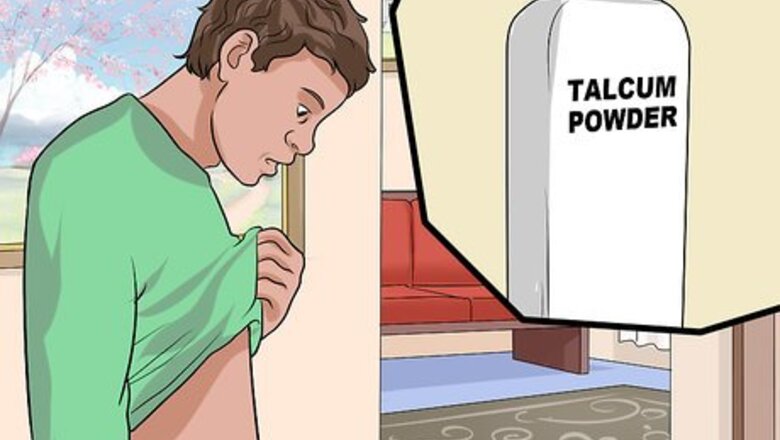
views
X
Trustworthy Source
US Food and Drug Administration
U.S. government agency responsible for promoting public health
Go to source
Talc is also used to absorb moisture in cosmetics and other personal care products and can be used to prevent caking in the manufacture of pharmaceutical tablets. Learn how to use talc safely so you can keep yourself and your family healthy.
Finding Safe Ways To Use Talcum Powder
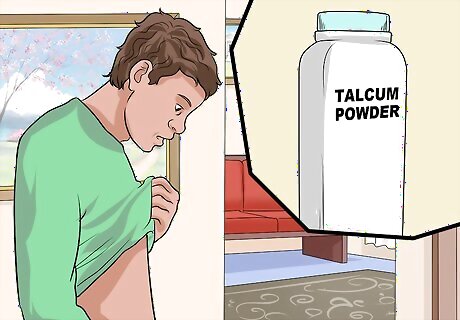
Use it for male irritation. Talcum powder appears to safe for males to use for genital sweating and chafing. It has not been linked to any cancers of male genitalia. Talcum powder can keep you dry if you have issues with chafing or other friction irritation. If you are a male using talcum powder on his genitals, do not use it before having sex with a woman. Talcum powder may be linked to ovarian cancer, and so you should make sure you are not exposing your partner to it. Wash the powder off before having sex or consider using an alternative product.

Wear talc-based cosmetics. Little evidence shows negative side effects occurring when wearing cosmetics or makeups with talc in them. The FDA regulates the use of talc in cosmetics. Recent studies by the FDA have found no asbestos in talc cosmetic products. Talc can be found in face powders, eye shadows, and blushes.

Use talcum powder sparingly. If you use talcum powder on your body, use it sparingly. Don't cake it on your body in thick layers. Use it in products where an alternative isn't available, but use it with caution. Make sure to shake out talcum powder in small doses. Don't shake a lot out at once because it can introduce talcum spores into the air. Inhaling talcum powder can cause respiratory distress.
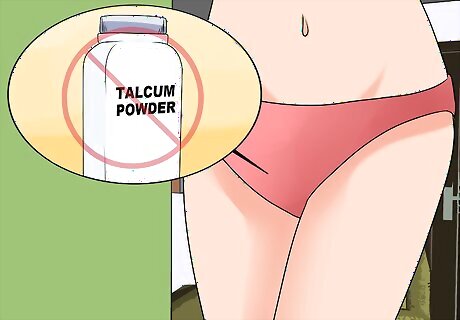
Avoid using talcum powder on your underwear if you are a woman. Talcum powder has been linked to ovarian cancer in women. The risk occurs when the powder enters the vagina and makes its way up to the ovaries. Research has reported mixed findings, but most medical professionals advise caution with the use of talcum powder on genitals. Prolonged exposure seems to be the greatest risk factor for ovarian cancer; therefore, if you are female, avoid using talc in underwear because it will be on the skin for a long period of time. Women should also refrain from putting talcum powder on sanitary napkins, diaphragms, condoms, or genitals.
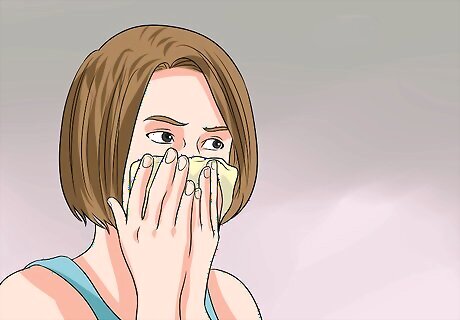
Avoid breathing in any powder. Talc can cause multiple health problems when breathed in, including respiratory problems. If you want to use it, try not to breathe it in. This may be difficult since talc can be a very fine powder. To keep from breathing it in, use small amounts. Refrain from shaking the talc container vigorously. Be gentle and avoid spreading the talcum powder around and dispersing it in the air. Inhaling significant amounts of talcum powder can cause a type of chemical pneumonia and is considered a medical emergency.

Refrain from sprinkling talcum powder on your baby directly. Talcum powder can be found in many baby products. If you choose to use it on your baby, don’t sprinkle it on the baby directly. Instead, step away from your baby and put the powder on your hands. Then rub it onto your baby. Make sure you shake the powder out away from your baby’s face. The biggest concern for babies is negative side effects due to inhalation.
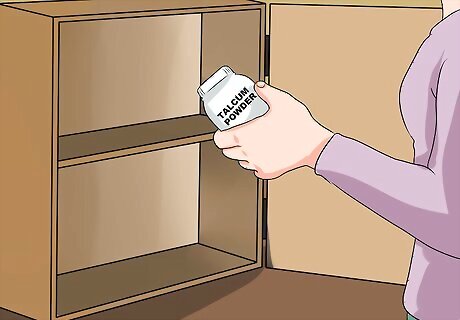
Keep all powder in a child-safe container. If you keep talcum powder in your home, keep it safe from your children. You can store it somewhere out of reach with the top tightly secure. You may also consider placing it in a separate, child-proof container in case your kids find it. Children can easily spill or shake talcum powder out of the container. This releases particles into the air that they can inhale. Keeping it safe from them reduces their risk of exposure.
Using Alternatives to Talcum Powder
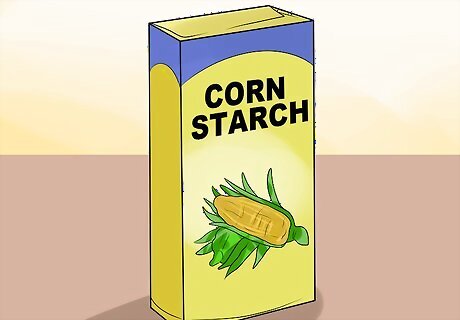
Try cornstarch or tapioca starch. Cornstarch and tapioca starch are possible alternatives for talcum powder. They help absorb moisture and protect against chafing. Cornstarch and tapioca starch are both readily available in supermarkets. Many brands even sell safer cornstarch-based baby and body powders. Cornstarch and tapioca starch can serve as “food” for skin bacteria and yeast, especially Candida. If you or your baby have a yeast rash, refrain from using this alternative because it can make a yeast infection worse. These yeast rashes tend to show up in the folds between the thighs and the groin. If you are concerned about talc-based makeup, you can even face powder, eye shadows, and blushes made with cornstarch.

Try other types of powders. If you don’t want to use cornstarch, try a different kind of powder. You can also use certain kinds of flour as a talcum powder alternative. Rice powder and chickpea powder will absorb moisture and help keep you dry. They are good alternatives to cornstarch or talc. Try corn flour or oat flour. They also work well to absorb moisture. You can find these flours and powders at the grocery store. Make sure you keep them in airtight containers so they stay fresh.

Add some powdered herbs. If you are using an alternative powder, add some powdered herbs such as lavender, rose petals, and chamomile flowers. These herbs can help deodorize and soothe the skin. Make sure to grind the herbs into a fine powder. You can use a coffee or spice grinder. Before using, sift the ground herbs to separate any larger pieces.
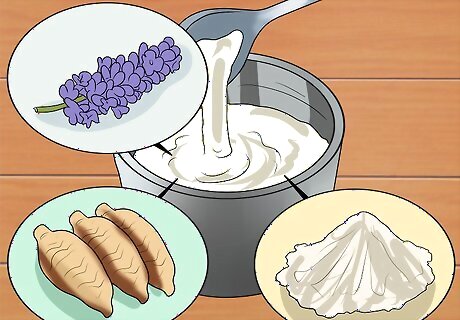
Make your own powder. You can combine any of these alternatives and make your own powder. Additionally, you can use arrowroot powder and white kaolin clay powder for the base instead. Use equal amounts of arrowroot and kaolin clay. Add three drops of lavender essential oil for every four tablespoons of the arrowroot and clay mixture and mix well. You can substitute any of the talc alternatives listed for either the arrowroot or the clay. For example, try mixing ½ cup of rice powder with ½ cup of oat flour. You can substitute dried herbs for the essential oil if you have a young baby or your baby has sensitive skin.
Understanding The Risks of Talcum Powder

Learn talcum powder’s connection to ovarian cancer. A recent study concluded that while rare, the frequent use of talc around a woman’s genital area can be associated with an increased risk of ovarian cancer by about 20-30%. An opinion prepared for a civil lawsuit concluded the same. Overall, the use of talc is a smaller risk for ovarian cancer as compared to obesity, the use of hormone replacement therapy, and family history, but is does appear to be real. The International Agency for Research on Cancer, a division of the World Health Organization, has talc listed as a possible carcinogen.

Know the risks of talcum powder on babies. Talcum powder is found in many baby powders and may pose a risk for your baby. The main danger for children is inhalation of the talcum powder dust, which can cause problems. Infants are especially at risk. Inhaling talcum powder may cause coughing, eye and throat irritation, difficulty breathing, wheezing, shallow breaths, chest pain, lung failure, diarrhea, vomiting, and even urinary or circulatory problems. In severe cases, comas or fever may occur. You can buy talc-free baby powders, use an alternative, or skip the powder all together and use creams or ointments.
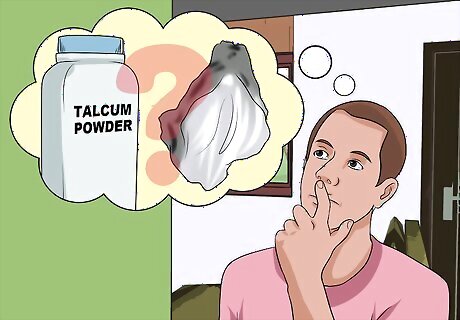
Understand the connection between talc and asbestos. Decades ago, some talc products also contained asbestos, a known carcinogen. Today, products sold in the US and in many other parts of the world are not allowed to include asbestos as an ingredient and are tested to determine if asbestos is a contaminant. Since the 1960s, there have been concerns that asbestos-contaminated talcum powder may be associated with cancer, particularly ovarian cancer in women who used talc around the genital area. Recently, a study was conducted by the FDA to survey “currently marketed cosmetic-grade raw material talc, as well as some cosmetic products containing talc” for contamination with asbestos. The study ran for a year, and the results found no talc products contaminated with asbestos. The FDA, however, was only able to test four separate talc suppliers, and a larger number of personal care products. The results were considered informative but not definitive.











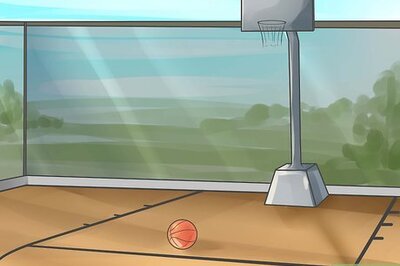






Comments
0 comment